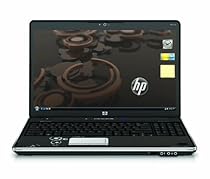
Brilliantly fast
With faster, intelligent, multi-core technology that applies processing power where it's needed most, new Intel® Core™ i7 processors deliver an incredible breakthrough in PC performance. They are the best desktop processor family on the planet.¹
You'll multitask applications faster and unleash incredible digital media creation. And you'll experience maximum performance for everything you do, thanks to the combination of Intel® Turbo Boost technology² and Intel® Hyper-Threading technology (Intel® HT technology)³, which maximizes performance to match your workload.
Product information
- 3.06 GHz, 2.93 GHz, and 2.66 GHz core speed
- 8 processing threads with Intel® HT technology
- 8 MB of Intel® Smart Cache
- 3 Channels of DDR3 1066 MHz memory
Features and benefits
Go to the next level of multi-core performance.
Intel Core i7 processors deliver an incredible breakthrough in quad-core performance and feature the latest innovations in processor technologies:
Intel® Turbo Boost technology maximizes speed for demanding applications, dynamically accelerating performance to match your workload—more performance when you need it the most.²
Intel® Hyper-Threading technology enables highly threaded applications to get more work done in parallel. With 8 threads available to the operating system, multi-tasking becomes even easier.³
Intel® Smart Cache provides a higher-performance, more efficient cache subsystem. Optimized for industry leading multi-threaded games.
Intel® QuickPath Interconnect is designed for increased bandwidth and low latency. It can achieve data transfer speeds as high as 25.6 GB/sec with the Extreme Edition processor.
Integrated memory controller enables three channels of DDR3 1066 MHz memory, resulting in up to 25.6 GB/sec memory bandwidth. This memory controller's lower latency and higher memory bandwidth delivers amazing performance for data-intensive applications.
Intel® HD Boost significantly improves a broad range of multimedia and compute-intensive applications. The 128-bit SSE instructions are issued at a throughput rate of one per clock cycle, allowing a new level of processing efficiency with SSE4 optimized applications.






 Gateway's EC Series of UltraPortable notebooks has just added to their family with the emergence of the new EC14D configurations. now you may think that this is just your typical small notebook but don't jump the gun on that just yet. The EC14D series is a rare breed as it features an integrated DVD drive, a feature not typically seen on notebooks with an ii.6-inch display. According to a Gateway spokesman "The integrated DVD drive in such a compact device will be a huge benefit for customers who want the flexibility to enjoy and share different movies, music, photos and more stored on a DVD or CD."
Gateway's EC Series of UltraPortable notebooks has just added to their family with the emergence of the new EC14D configurations. now you may think that this is just your typical small notebook but don't jump the gun on that just yet. The EC14D series is a rare breed as it features an integrated DVD drive, a feature not typically seen on notebooks with an ii.6-inch display. According to a Gateway spokesman "The integrated DVD drive in such a compact device will be a huge benefit for customers who want the flexibility to enjoy and share different movies, music, photos and more stored on a DVD or CD."





















